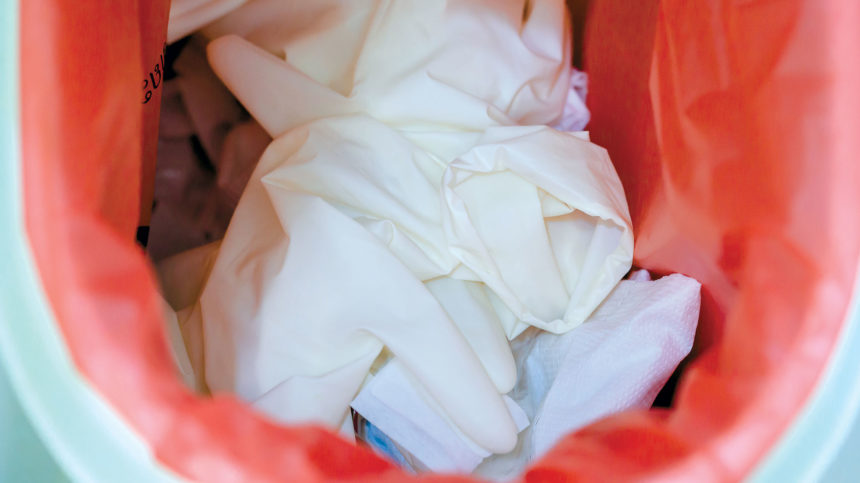
Letting healthcare workers put on gloves without requiring them to wash their hands first helped employees comply with expected infection prevention strategies better than requiring them to wash their hands and then put on gloves, a new study finds.
Researchers wanted to know if letting workers directly put on gloves without requiring them to wash first would help healthcare workers adhere to infection prevention practices better than requiring them to wash first before putting on gloves. Washing hands first means workers have to let their hands dry before putting on gloves, which can affect adherence and hamper operations in a time crunch, not to mention cause skin irritation. The study was published in JAMA Network Open last week.
The researchers utilized data from 13 hospitals and studied activities of 3,790 healthcare workers. The team of scientists randomly assigned hospital units to usual care (washing first, then putting on gloves) and direct gloving (the intervention). The team then tracked how well workers stuck to expected gloving practices when they entered and left the room.
Adherence was greater in the six units with direct gloving compared to the units assigned to usual care, the data showed.
In addition to the data on gloving, the researchers looked at attitudes on direct gloving among 25 doctors, nurses and other healthcare workers. Of them, 68% said there could be potential benefits such as better time efficiency, less skin irritation, staff satisfaction and adherence to infection control expectations. Of those 25 healthcare professionals interviewed, 60% weren’t worried about risks with direct gloving as long as it was proven safe. One participant said patients may view it negatively, while two participants said they weren’t comfortable with direct gloving.
Overall, the authors of the study say a policy endorsing direct gloving could help workers better stick to infection prevention techniques and glove use in medical settings.



